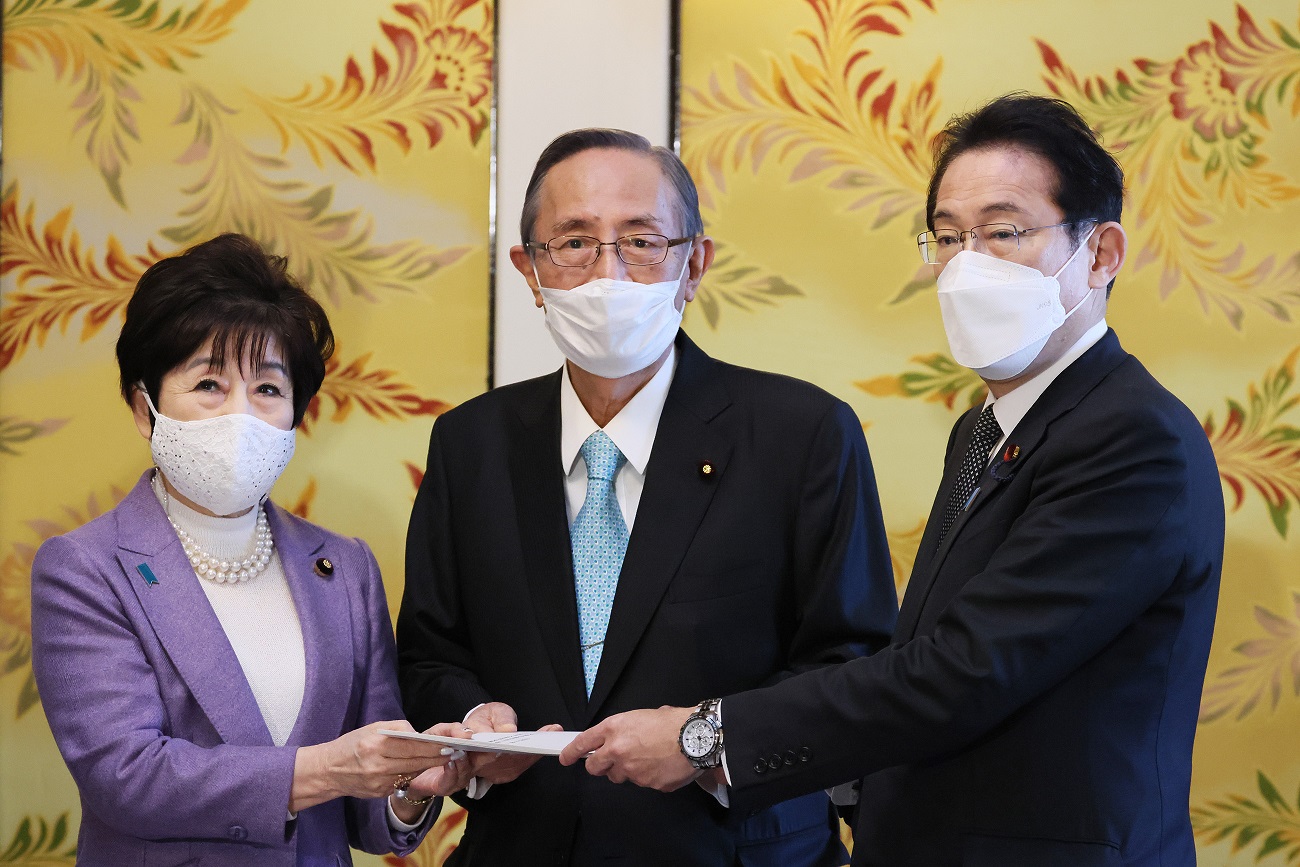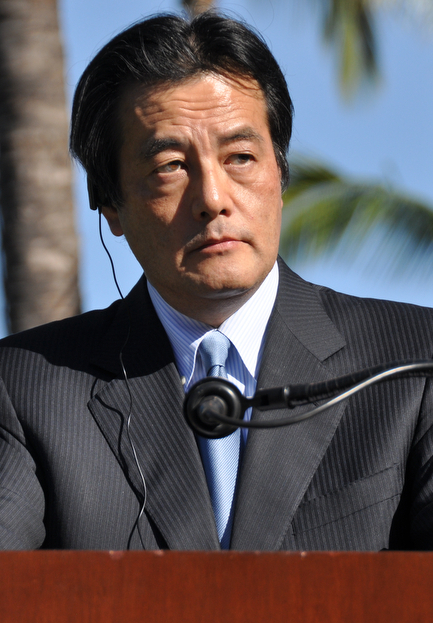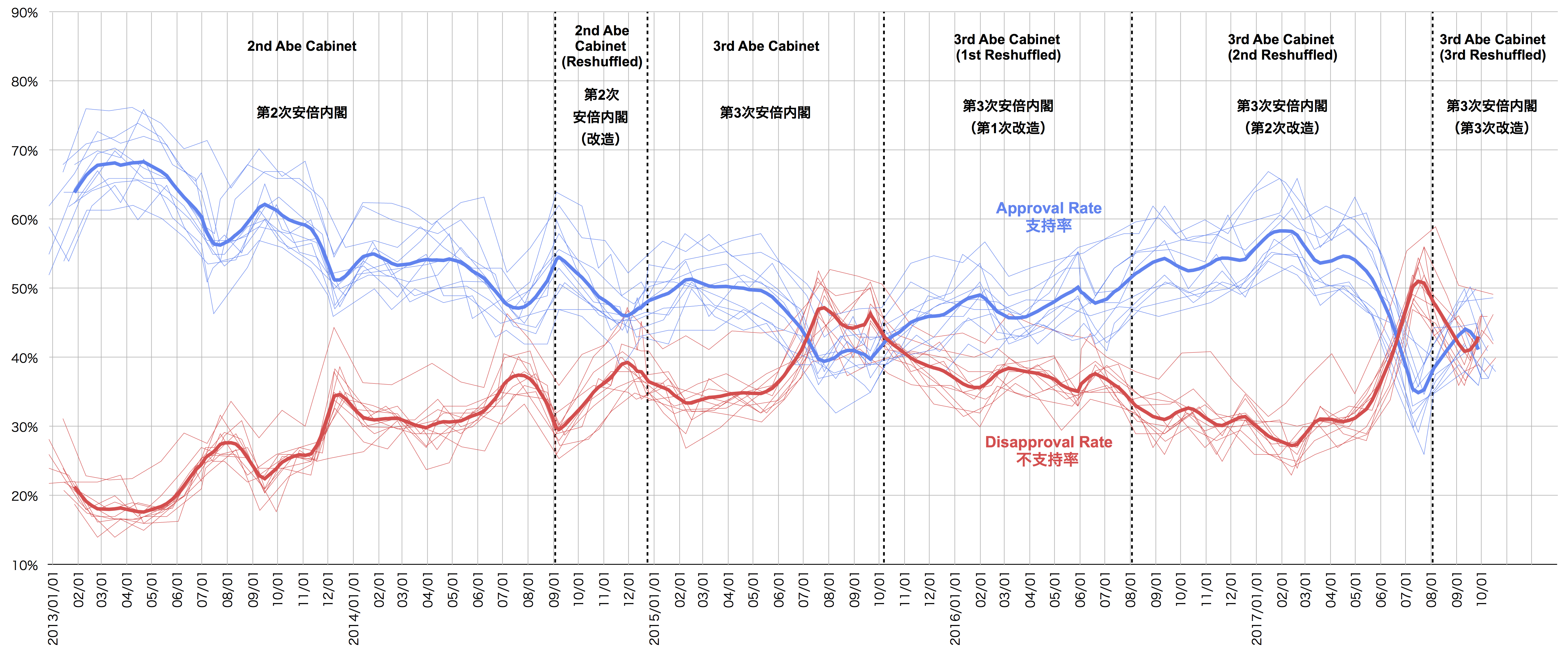|
Azuma Koshiishi
is a Japanese politician of the Democratic Party, a member of the House of Councillors in the Diet, and general secretary of the ruling Democratic Party. A native of Nirasaki, Yamanashi, and graduate of Tsuru University, he was elected to the House of Representatives of Japan in 1990, where he served for two terms until 1996 when he failed to be re-elected. He was elected to the House of Councillors for the first time in 1998. Career before politics Koshiishi was an elementary school teacher for 26 years.The Japan TimeKoshiishi still siding with Ozawa September 17 2011Retrieved on August 12, 2012 He became involved in union activities through the Japan Teachers Union (Nikkyoso), becoming the chair of the executive committee of the Yamanashi branch in 1984, and Chair of the Yamanashi Trade Union Confederation in 1986. Subsequently, he became the director of the Yamanashi Prefecture Educational Research Institute in 1997.House of Councilors websitList of the members - Mr. KOSHIIS ... [...More Info...] [...Related Items...] OR: [Wikipedia] [Google] [Baidu] |
President Of The House Of Councillors
The is the presiding officer of the House of Councillors, the upper house of Japan, and together with the Speaker of the House of Representatives (Japan), Speaker of the House of Representatives, the president is also the head of the Government of Japan, legislative branch of Japan. The president is elected by members of the House at the start of each session, and can serve two three-year terms, for a maximum of six years. The current president of the House of Councillors is Masakazu Sekiguchi, who took office on 11 November 2024. Selection The election of the president takes place on the day of the new session, under the moderation of the secretary-general of the House. The president is elected by an anonymous vote, and must have at least half of the votes in order to take office. If no one gets over half of the votes, the top two candidates will be voted again, and if they get the same number of votes, the president is elected by a lottery. The vice president is elected se ... [...More Info...] [...Related Items...] OR: [Wikipedia] [Google] [Baidu] |
Democratic Party (Japan, 2016)
The was a political party in Japan. It was the largest opposition political party in Japan from 2016 until its marginalization in the House of Representatives in 2017.民進英語名、略称DPに Yomiuri Shimbun The party was founded on 27 March 2016 from the merger of the and the . The majority of the party split on 28 September 2017, before the [...More Info...] [...Related Items...] OR: [Wikipedia] [Google] [Baidu] |
2016 Japanese House Of Councillors Election
House of Councillors elections were held in Japan on Sunday 10 July 2016 to elect 121 of the 242 members of the upper house of the National Diet, for a term of six years. As a result of the election, the Liberal Democratic Party– Komeito coalition gained ten seats for a total of 145 (60% of all seats in the house), the largest coalition achieved since the size of the house was set at 242 seats. 76 members were elected by single non-transferable vote (SNTV) and first-past-the-post (FPTP) voting in 45 multi- and single-member prefectural electoral districts; for the first time, there were two combined (''gōku'') single-member districts consisting of two prefectures each, Tottori-Shimane and Tokushima-Kōchi. This change and several other reapportionments were part of an electoral reform law passed by the Diet in July 2015 designed to reduce the maximum ratio of malapportionment in the House of Councillors below 3. The nationwide district which elects 48 members by D'Hondt pro ... [...More Info...] [...Related Items...] OR: [Wikipedia] [Google] [Baidu] |
2010 Japanese House Of Councillors Election
House of Councillors elections were held in Japan on July 11, 2010. In the previous elections in 2007 the Liberal Democratic Party (LDP) had lost its majority to the Democratic Party (DPJ), which managed to gain the largest margin since its formation in 1996. The House of Councillors is elected by halves to six-year terms. The seats up for election in 2010 were last contested in the 2004 election. Background On 11 June 2008, a non-binding censure motion was passed by parliament's opposition-controlled House of Councillors against then Prime Minister Yasuo Fukuda. Filed by the DPJ and two other parties, it was the first censure motion against a prime minister under Japan's post-war constitution. Ahead of the G8 summit, it attacked his handling of domestic issues including an unpopular medical plan and called for a snap election or his resignation. On 12 June a motion of confidence was passed by the lower house's ruling coalition to counter the censure. Fukuda abruptly announ ... [...More Info...] [...Related Items...] OR: [Wikipedia] [Google] [Baidu] |
2004 Japanese House Of Councillors Election
House of Councillors elections were held in Japan on 11 July 2004. The House of Councillors consisted of 242 members who served six-year terms. Approximately half the members are elected every three years. At these elections 121 members were elected. Of these 73 were elected from the 47 prefectural districts and 48 were elected from a nationwide list by proportional representation. Contesting parties ; Government * Liberal Democratic Party (conservative) * New Komeito (theocratic Buddhist, conservative) ; Opposition * Democratic Party (social-democratic/liberal) * Japanese Communist Party (communist) * Social Democratic Party (social-democratic) Results The opposition Democratic Party won a plurality of the popular vote and seats contested in the election, sweeping the liberal urban areas. The ruling Liberal Democratic Party failed to win in its strongholds but once more received most of its support from the agrarian areas. New Komeito did well, reaching its goals, as did t ... [...More Info...] [...Related Items...] OR: [Wikipedia] [Google] [Baidu] |
1998 Japanese House Of Councillors Election
House of Councillors elections were held in Japan on 12 July 1998. The Liberal Democratic Party (LDP) under Ryūtarō Hashimoto had restored single-party government in 1996 and was now aiming to also regain clear control of the House of Councillors, in which it was several seats short of a majority. However, it lost 13 seats in the elections giving the opposition clear control and leading to prime minister Hashimoto announcing his resignation. Keizō Obuchi was elected LDP president on 24 July, defeating Seiroku Kajiyama and Junichirō Koizumi. On 30 July 1998 Obuchi was designated as prime minister by the Diet against the vote of the House of Councillors where DPJ president Naoto Kan defeated Obuchi by 142 votes to 103. Obuchi entered coalition negotiations in late 1998. In January 1999 the LDP entered a ruling coalition with Ichirō Ozawa's Liberal Party, bringing the government within few seats of a majority; in October 1999 New Komeito also entered the coalition, endin ... [...More Info...] [...Related Items...] OR: [Wikipedia] [Google] [Baidu] |
1996 Japanese General Election
General elections were held in Japan on 20 October 1996. A coalition of the Liberal Democratic Party (Japan), Liberal Democratic Party, New Party Sakigake and the Social Democratic Party (Japan), Social Democratic Party, led by incumbent Prime Minister Ryutaro Hashimoto of the LDP won the most seats. These were the first elections held after the 1994 Japanese electoral reform, 1994 electoral reforms. Previously, each district was represented by multiple members, sometimes from the same party, causing intra-party competition. Under the new rules, each district nominated one House of Representatives of Japan, representative, elected using first-past-the-post voting. A separate Party-list proportional representation, party-list vote was introduced for voters to choose their favored party in addition to votes for individual candidates, as a way to more accurately approximate the seats in the House of Representatives of Japan to the actual party votes, in an effort to achieve more pro ... [...More Info...] [...Related Items...] OR: [Wikipedia] [Google] [Baidu] |
Democratic Party Of Japan (1996-1998)
The was a centrist political party in Japan, and one of the forerunners to the Democratic Party of Japan formed in 1998. Its two leading members, Yukio Hatoyama and Naoto Kan, subsequently and sequentially became Prime Ministers at the end of the first decade of the 21st century. History The party was founded on 29 September 1996 by sitting members of the Diet, and was composed mostly of former Sakigake and Japan Socialist Party politicians who did not support an alliance with the ruling Liberal Democratic Party. Its initial leaders were Yukio Hatoyama and Naoto Kan, formerly members of Sakigake. At its formation, it had 39 parliamentarians. The party won 52 seats in the 1996 general election, becoming the second-largest opposition party after the New Frontier Party. In April 1998, the party was augmented by former members of the New Frontier Party, which had collapsed in December 1997, increasing it to 90 seats. It then merged with the Good Governance Party (''Minseitō''), ... [...More Info...] [...Related Items...] OR: [Wikipedia] [Google] [Baidu] |
1993 Japanese General Election
General elections were held in Japan on 18 July 1993 to elect the 511 members of the House of Representatives. The Liberal Democratic Party (LDP), which had been in power since 1955, lost their majority in the House. An eight-party coalition government was formed and headed by Morihiro Hosokawa, the leader of the Japan New Party (JNP). The election result was profoundly important to Japan's domestic and foreign affairs. It marked the first time under the 1955 System that the ruling coalition had been defeated, being replaced by a rainbow coalition of liberals, centrists and reformists. The change in government also marked a change in generational politics and political conduct; the election was widely seen as a backlash against corruption, pork-barrel spending and an inflated bureaucracy. Proposed electoral reforms also held much influence over the election. Eleven months after the election, with the electoral reform legislation that was its raison d'être passed, the eight- ... [...More Info...] [...Related Items...] OR: [Wikipedia] [Google] [Baidu] |
1990 Japanese General Election
General elections were held in Japan on 18 February 1990 to elect the 512 members of the House of Representatives, the lower house of the National Diet. Inter-Parliamentary Union Background As with the previous House of Councillors election, the "four-point set of evils" in the minds of voters were the controversial , the Recruit scandal, agricultural[...More Info...] [...Related Items...] OR: [Wikipedia] [Google] [Baidu] |
Japan Teachers Union
, abbreviated , is Japan's oldest labor union of teachers and school staff. Established in 1947, it was the largest teachers union until a split in the late 1980s. The union is known for its critical stance against the ruling conservative Liberal Democratic Party (LDP) on such issues as ''Kimigayo'' (the national anthem), the Flag of Japan, and the screening of history textbooks during the LDP's near continuous one-party rule since 1955. Today Nikkyōso is affiliated to the trade union confederation Rengo. It had 290,857 members as of December 2009.Rengo websitRengo brochure 2010-2011 Retrieved on July 6, 2012 History Nikkyōso was founded in June 1947, with assistance from the Japan Communist Party (JCP), as a national federation of local prefectural teachers unions, although in practice each of these unions had considerable autonomy and its own strengths and political orientation. At the time of its founding, Nikkyōso represented almost every single school teacher, universit ... [...More Info...] [...Related Items...] OR: [Wikipedia] [Google] [Baidu] |
House Of Representatives Of Japan
The is the lower house of the National Diet of Japan. The House of Councillors is the upper house. The composition of the House is established by and of the Constitution of Japan. The House of Representatives has 465 members, elected for a four-year term. Of these, 176 members are elected from 11 multi-member constituencies by a Party-list proportional representation, party-list system of proportional representation, and 289 are elected from single-member constituencies. The overall voting system used to elect the House of Representatives is a Parallel voting, parallel system, a form of semi-proportional representation. Under a parallel system, the allocation of list seats does not take into account the outcome in the single seat constituencies. Therefore, the overall allocation of seats in the House of Representatives is not proportional, to the advantage of larger parties. In contrast, in bodies such as the German ''Bundestag'' or the New Zealand Parliament the election of s ... [...More Info...] [...Related Items...] OR: [Wikipedia] [Google] [Baidu] |



